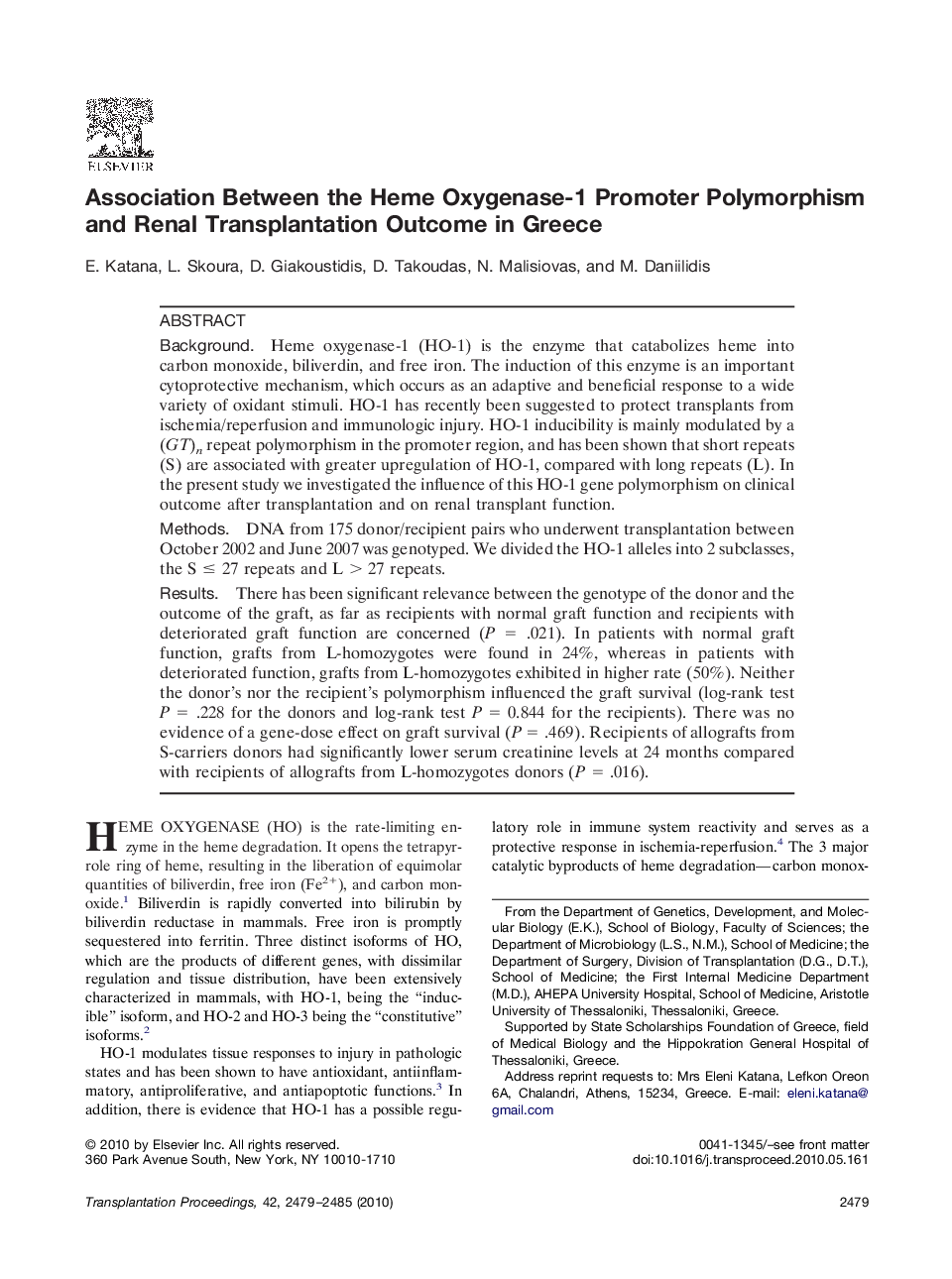| Article ID | Journal | Published Year | Pages | File Type |
|---|---|---|---|---|
| 4259421 | Transplantation Proceedings | 2010 | 7 Pages |
BackgroundHeme oxygenase-1 (HO-1) is the enzyme that catabolizes heme into carbon monoxide, biliverdin, and free iron. The induction of this enzyme is an important cytoprotective mechanism, which occurs as an adaptive and beneficial response to a wide variety of oxidant stimuli. HO-1 has recently been suggested to protect transplants from ischemia/reperfusion and immunologic injury. HO-1 inducibility is mainly modulated by a (GT)n repeat polymorphism in the promoter region, and has been shown that short repeats (S) are associated with greater upregulation of HO-1, compared with long repeats (L). In the present study we investigated the influence of this HO-1 gene polymorphism on clinical outcome after transplantation and on renal transplant function.MethodsDNA from 175 donor/recipient pairs who underwent transplantation between October 2002 and June 2007 was genotyped. We divided the HO-1 alleles into 2 subclasses, the S ≤ 27 repeats and L > 27 repeats.ResultsThere has been significant relevance between the genotype of the donor and the outcome of the graft, as far as recipients with normal graft function and recipients with deteriorated graft function are concerned (P = .021). In patients with normal graft function, grafts from L-homozygotes were found in 24%, whereas in patients with deteriorated function, grafts from L-homozygotes exhibited in higher rate (50%). Neither the donor's nor the recipient's polymorphism influenced the graft survival (log-rank test P = .228 for the donors and log-rank test P = 0.844 for the recipients). There was no evidence of a gene-dose effect on graft survival (P = .469). Recipients of allografts from S-carriers donors had significantly lower serum creatinine levels at 24 months compared with recipients of allografts from L-homozygotes donors (P = .016).
